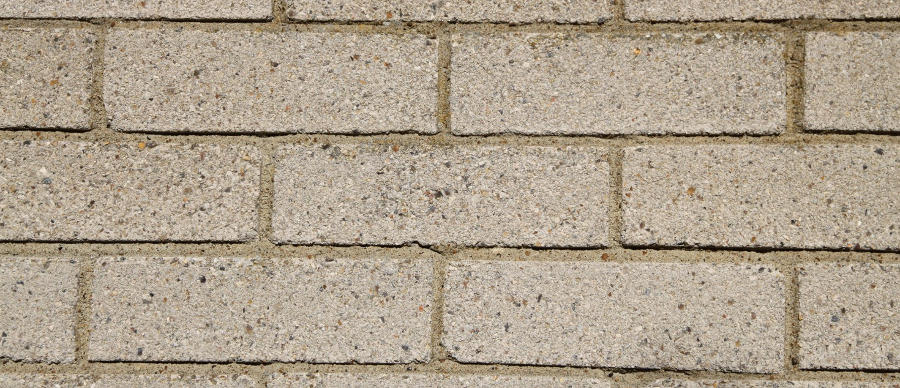The original bricks are no longer available, but a close match was obtained for repairs done in 2008 and 2010. The new bricks are “Castleton White Smooth” from P.D. Edenhall: www.edenhall.co.uk By 2018 those had been discontinued too, but “Castleton White Stock” is now available and is a good match. Another option is “Dover White Sand Faced“, also from P.D. Edenhall, which could be a better match in some cases.
The Society keeps a stock of bricks that can be purchased for small repairs.
It is important to get the mortar colour right. It is also important to get the strength right: if it is too strong then any movement in the wall will crack the bricks. A good starting point is:
3 parts washed sand (Ideally marine washed sand: see below)
1 part white cement
1 part lime
Try to get very light-coloured sand, as otherwise the mortar will be too yellow.
Cris and Carol had some brickwork done in 2017 and made some interesting discoveries. Cris writes:
Just been chatting to our bricklayer about mortars to use for brick laying. We’ve done quite a bit of nosing around at the colour and texture of the mortars originally used to build our houses and garden walls.
First fact is that there are loads of different colours/shades of mortar used originally. On our house the shades differ greatly as you look up and along the house walls.
Second fact (or at least our guys insight) seems to be that the sand used for our mortars originally was marine washed sand (i.e. from the sea) whereas most sand builders are able to get hold of is not. Marine sand obviously is a mixture of all sorts of materials with various ground rock types, plus bone and shell making up the bulk. It has
large variation of particle sizes and particle colours.
Modern building sands are crushed and ground into uniform colour/shade and texture substrates. So mortar made from them is also very uniform (and a bit harsh to the eye in contrast to the more natural original mortar)
So for anyone needing to do any restorative brickwork, the advice is to hunt out natural Marine Quartz washed sand. Not easy to find.
Another possibility is to send off a sample of existing mortar to a company like Lime Stuff or Conserv who can make up batches of mortar to match. They can also supply bulk bags of washed sea sand.
